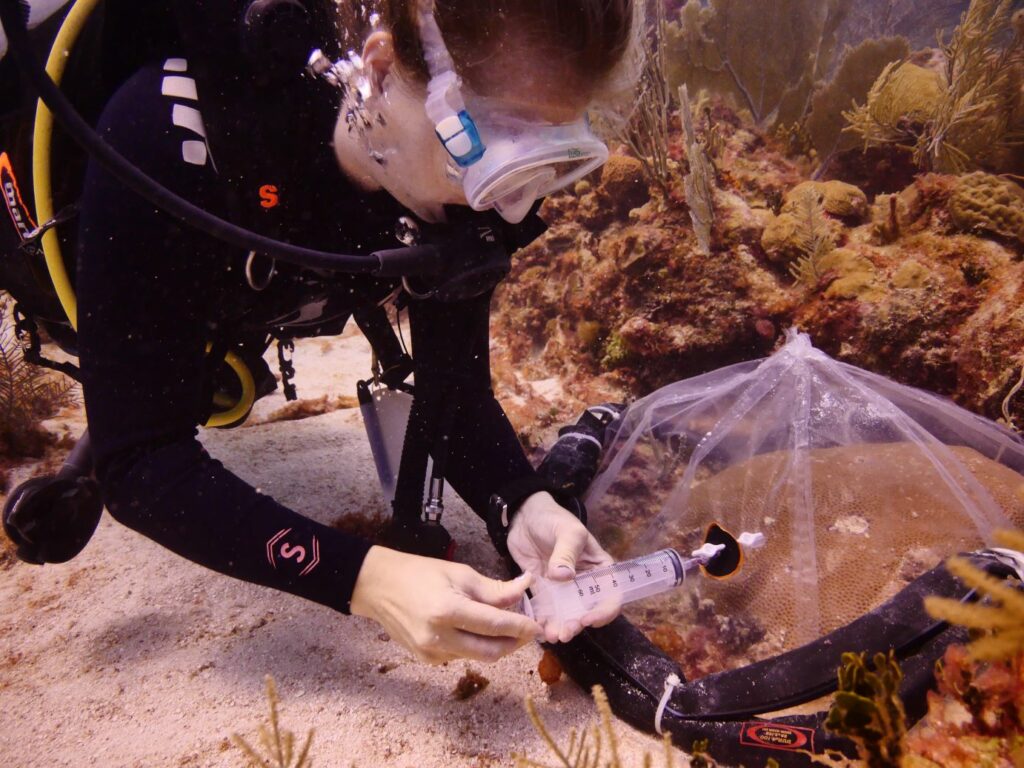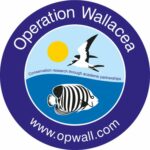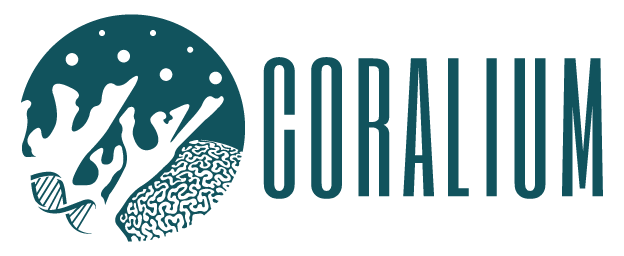Reef-building corals are animals which rely upon symbiotic micro-algae living within their tissues to provide energy through photosynthesis. Through the process of calcification, scleractinian (stony) corals deposit calcium carbonate skeleton. Coral reefs are built from the accumulation of thousands of years of this coral skeletal material. It is this process of reef generation and maintenance that makes corals so valuable to humans: the strong calcium carbonate structure of the reef absorbs wave and storm energy to protect coastlines.
Coral reefs and seagrasses in tropical coastal waters are powerhouses for oxygen production and carbon cycling. Photosynthesizing organisms produce oxygen and use up carbon dioxide, and the converse is true of respiring animals. In coral reefs these organic processes drive the biology of coral colonies and ultimately the growth and maintenance of the reef structure, supporting inorganic carbon generation and lock-down. These processes can measured using biogeochemical techniques to track changes in oxygen, dissolved inorganic carbon, and total alkalinity which can tell us how much calcification and photosynthesis is taking place. These measurements are interesting because they can inform coral growth rates, stress, and overall ecosystem health. We can implement biogeochemcial methods to support monitoring of coastal ecosystem decline and to track restoration outcomes.

During my PhD I measured benthic metabolism of coral reefs and seagrasses of Akumal using low-cost benthic chambers to incubate areas of reef and seagrass patches. The chambers can be made from cheap, easily accesible materials and are adaptable to different locations and experiments. If you want to try making chambers for your project, get in touch!
During my Fulbright year, I am using the benthic chambers to collect data on calcification by different functional groups. Thanks to funding from Protect Our Reefs and Coral Conservation Society, I will collect data on mixed communities of coral and crustose coralline algae (CCA) using benthic chambers. We will collect water samples over the course of incubations to trial a novel biogechemical method with the coastal carbon lab at Georgia Southern University and collaborators, for tracking calcification as a tool for reef monitoring. Read more about my Fulbright experiment here.
Mallon J, Banaszak AT, Donachie L, Exton D, Cyronak T, Balke T, Bass AM. 2022. A low-cost benthic incubation chamber for in-situ community metabolism measurements. PeerJ 10:e13116 https://doi.org/10.7717/peerj.13116




